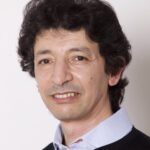Lien vers HAL – pasteur-03916414
Lien DOI – 10.1007/s00439-022-02448-7
Human Genetics, 2022, 141 (3-4), pp.709-735. ⟨10.1007/s00439-022-02448-7⟩
Usher syndrome (USH) is the most common cause of deaf–blindness in humans, with a prevalence of about 1/10,000 (~ 400,000 people worldwide). Cochlear implants are currently used to reduce the burden of hearing loss in severe-to-profoundly deaf patients, but many promising treatments including gene, cell, and drug therapies to restore the native function of the inner ear and retinal sensory cells are under investigation. The traditional clinical classification of Usher syndrome defines three major subtypes—USH1, 2 and 3—according to hearing loss severity and onset, the presence or absence of vestibular dysfunction, and age at onset of retinitis pigmentosa. Pathogenic variants of nine USH genes have been initially reported: MYO7A, USH1C, PCDH15, CDH23 , and USH1G for USH1, USH2A, ADGRV1, and WHRN for USH2, and CLRN1 for USH3. Based on the co-occurrence of hearing and vision deficits, the list of USH genes has been extended to few other genes, but with limited supporting information. A consensus on combined criteria for Usher syndrome is crucial for the development of accurate diagnosis and to improve patient management. In recent years, a wealth of information has been obtained concerning the properties of the Usher proteins, related molecular networks, potential genotype–phenotype correlations, and the pathogenic mechanisms underlying the impairment or loss of hearing, balance and vision. The advent of precision medicine calls for a clear and more precise diagnosis of Usher syndrome, exploiting all the existing data to develop a combined clinical/genetic/network/functional classification for Usher syndrome.

